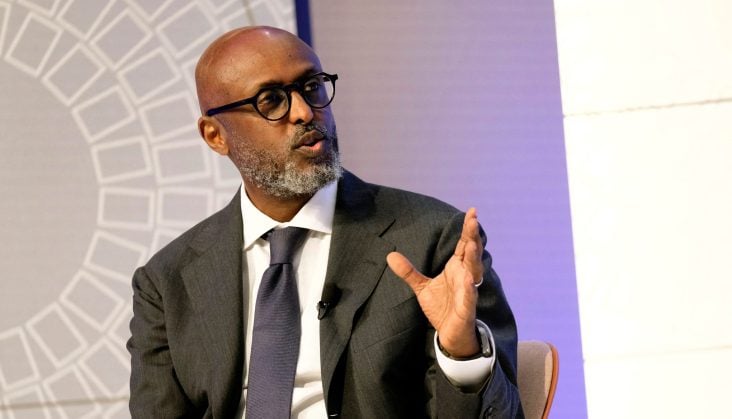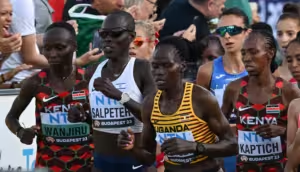
Ghana’s historically low tax collection is one of the key issues that needs to be addressed in order for the West African nation to meet its “aggressiveâ€, yet “important†debt-to-GDP ratio target in five years, says Abebe Aemro Selassie, director of the IMF’s Africa department.
The IMF estimated Ghana’s tax revenue to be at 17.2% of GDP this year, up from 15.6% in 2022.
The fund expects the collections to reach 24% by 2028, the year the government aims to bring down its debt-to-GDP ratio to 55% from the current levels that exceed 100%.
“Fiscal deficits for many years in Ghana have been on the high side,†he tells The Africa Report during the Africa CEO Forum in Abidjan. “The ratio of debt service levels, relative to tax collection, have been steadily increasing.
“When you’re investing, you’d want to make sure that there is consistency between increased services you’re providing and your capacity to service […] debt†incurred to finance these projects, he says.
While public investment was rightfully directed to areas that serve development in Ghana over the past years such as health, education and infrastructure, “the government has not done as good a job in capturing all of the returns on all of this investment through the tax systemâ€.
“It is an important opportunity to stop and think about what the priorities for spending are and how to get value for money†to create more fiscal space, Selassie says.Â
‘Cautiously optimistic’
Reducing the debt-to-GDP ratio to 55% by 2028 is an unlikely possibility for Ghana, economists argue, given its severe financial crunch and multiple economic hurdles. The country has been struggling for months to reach an agreement over the rescheduling of its public debt.
Slashing public debt as targeted won’t be easy, yet doing so would provide a guarantee of Ghana’s fiscal health, says Selassie. “We are cautiously optimistic,†he replies, when asked about the government’s chances of meeting the goal.
“This threshold, aggressive as it is, is an important one, because higher levels of debt would mean even more fiscal adjustment,†he adds. “If you don’t get the debt to that level, it means more of the burden of adjustment will follow.â€
Achieving the target largely hinges on Ghana’s debt restructuring, Selassie says. The IMF approved a three-year, $3bn facility for the gold-rich country last May, but is ringing the alarm bells about the lack of agreement with creditors over haircuts amid drawn-out talks.
Assurances that all creditors will be treated equally and that the government will fulfil its agreed commitments could pave the way for a deal to be struck, says Selassie.
Ghana missed a coupon payment on its Eurobond in February, which was followed by a credit rating downgrade to “restricted default†by Fitch.
Rebound and growth
Reducing debt-to-GDP ratio is also “predicated on some rebound in economic activityâ€, Selassie points out. But obstacles to revitalizing Ghana’s economy and boosting its growth rates have been lingering.  Â
The parliament late in March passed new taxes with the aim of increasing state revenue by ¢4bn ($353.2m), which has raised fears that Ghana will be less appealing to investors. Selassie says that state-owned enterprises (SOEs) might need to be “put on a better footingâ€.
The public sector in Ghana has long been accused of being plagued with corruption and nepotism, resulting in losses that further compound the country’s economic misery. Ten unnamed SOEs in the energy sector, according to media reports, suffered losses worth ¢9bn (nearly $793m) from 2018 to 2020.
Last February, Kenneth Thompson, CEO of Dalex Finance, called for the sale of
SOEs to alleviate the burden. Authorities have repeatedly expressed willingness to list SOEs, albeit without following through.
Ghana’s growth rate slowed to 3.1% in 2022 from 5.1% the previous year. With the lion’s share of the country’s assets at their disposal, SOEs could significantly accelerate growth rates should they embark on reforms.
“In some cases, it’s simply a matter of rethinking their (SOEs’) model and seeing what contribution they’re making to growth,†Selassie says.






